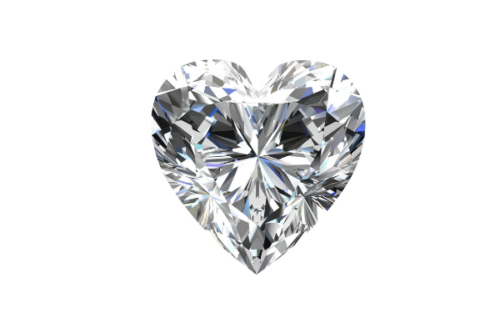When we talk about investments that capture the imagination, pure diamonds are guaranteed to score very highly. Diamonds come in many sizes, weights, cut shapes and colours. They all have one thing in common: with 10 on the Mohs scale of mineral hardness, they are the hardest stones found in nature. In this article, we discuss the clarity of diamonds and explain how this affects their value.

How to tell the clarity of a diamond
16 Jul 21
How can you assess the clarity of a pure diamond?
Just like the colour, the clarity of a diamond is determined by nature. Precious stones are characterised by internal impurities that affect their transparency. After all, diamonds are created by compressing carbon. Inclusions, also known as impurities, can arise because certain carbon particles haven’t been completely crystallised. External impurities can also occur. These are called blemishes and they are located on the surface of the diamond.
How can you determine the clarity of a diamond?
A diamond can look perfect to the naked eye. However, to correctly tell the clarity of a diamond, you will need to use tools such as a magnifying glass or even a microscope. A diamond is a natural element, therefore, no diamond is perfect, although some specimens come pretty close. The renowned GIA laboratory (Gemological Institute of America) distinguishes eleven degrees of clarity within the following categories:
- Flawless (FL) – The diamond contains no visible internal or external impurities at tenfold magnification. These diamonds are called flawless.
- Internally Flawless (IF) – No inclusions, only blemishes on the surface at tenfold magnification.
- Very, Very Slightly Included (VVS1 and VVS2) – Almost no inclusions at tenfold magnification.
- Very Slightly Included (VS1 and VS2) – Small inclusions at tenfold magnification.
- Slightly Included (SI1 and SI2) – Visible inclusions at tenfold magnification.
- Included (I1, I2 and I3) – Visible inclusions that can affect clarity and brilliance at tenfold magnification.
Contrary to popular belief, the clarity of a rough diamond is no different from that of the finished gemstone after the cutting process. However, a rough diamond looks less transparent due to the lack of a cut form. So, buying rough diamonds to invest can therefore carry some risks. Rough diamonds may have a better price tag than cut diamonds, but they often lose a lot of carat weight when cut.
How clear are coloured diamonds?
A clear, colourless diamond is often referred to as a clear diamond, but coloured diamonds can also be very clear. After all, the same grading of clarity applies to coloured as well as colourless diamonds. The value of coloured diamonds increases at a higher grading of purity clarity, but the colour intensity is also very important. The colour intensity ranges from 'faint' to 'fancy vivid'. Diamonds with intense colours are the rarest and therefore, also the most valuable.
What does the clarity of a diamond say about its value?
The clarity of a diamond has nothing to do with the cut shape or the cut quality. Along with the clarity, cut, carat weight and colour, the final value of the diamond is determined – these are called the 4 C's. Colourless diamonds that contain hardly any inclusions are very rare, and therefore increase the value of the diamond considerably.
At BNT Diamonds, we sell diamonds with a minimum purity of VS1. All the diamonds we offer, also have a certificate from a reliable laboratory describing all the characteristics of the diamond.
Want to find out more about investing in colourless diamonds? Please contact the experts at BNT Diamonds and get expert advice.

